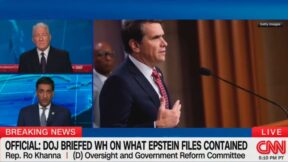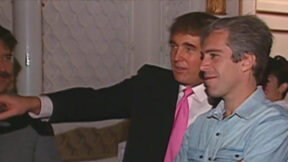How the Media — Right, Left and Center — Dropped the Ball on Covering the Waukesha Tragedy

Jim Vondruska/Getty Images
CNN posted an odd tweet on Sunday that read: “Waukesha will hold a moment of silence today, marking one week since a car drove through a city Christmas parade, killing six people and injuring scores of others.”
Waukesha will hold a moment of silence today, marking one week since a car drove through a city Christmas parade, killing six people and injuring scores of others.https://t.co/QMNccpBI0y
— CNN (@CNN) November 28, 2021
A car did not drive itself through the parade, of course. A person, Darrell Edward Brooks, rammed a car into a crowd, killing six people and injuring more than 40 others on Nov. 21 in the Wisconsin town. People, not cars or guns, kill and are charged and put on trial. The car or gun is only the mechanism that the perpetrator uses to carry out their violent acts.
That tweet is not the only example of media reporting so poorly on the incident. The press on both sides of the ideological spectrum has failed to properly cover the tragedy – a tragedy in it of itself.
Similarly to CNN, The Washington Post tweeted that the tragedy was “caused by an SUV.” The tweet has since been deleted. “We’ve deleted a previous tweet for this story that included language that was changed after publish,” tweeted the Post. At least the Post did the right thing, while CNN has yet to delete its tweet or any other coverage blaming an inanimate object for a crime with a perpetrator.
NBC News called what transpired in Waukesha an “accident” even though it wasn’t. Brooks, according to the criminal complaint filed against him, deliberately rammed his car through the parade after fleeing a domestic incident and Brooks refused police orders to stop when he drove his car in the vicinity of the parade.
“It continued to drive in a zigzag motion. It was like the SUV was trying to avoid vehicles, not people,” said one witness, according to the complaint. “There was no attempt made by the vehicle to stop, much less slow down.”
Meanwhile, right-wing media has speculated wildly about Brooks’ motives from the moment he was identified as the suspect, calling the tragedy domestic terrorism even though motives have yet to be established.
Police making clear that what happened in Waukesha was not “a terrorist event” has done little to slow the flood of conspiracy theories.
Although Brooks’ past social media posts that include bigotry are disturbing, there remains no evidence tying his posts to the killings. The New York Post published an article that Brooks wrote “an anti-Trump and anti-police song called ‘X.’” Again, there is no evidence that Brooks was motivated, in carrying out the attack, by anti-Trump or anti-police bias.
Right-wing journalist Andy Ngo has posted tweet after tweet after tweet about Brooks’ past, exciting his followers but not establishing any link between that history and the attack.
It would be prudent for the media to wait until the authorities have established a motive before diving into what drove Brooks to do what he did. And the press has a right to question that motive, if there is reason to believe authorities are providing a faulty one. But speculating a motive does a disservice to the public.
Reaching conclusions based on subjective evidence is irresponsible. Proof is a must in journalism and the legal system. And framing matters no matter who the suspect is or what the crime was. Journalists, not media outlets themselves, create the bias.
Finally, media should not ignore this going forward. New developments, including a sixth intentional homicide charge being added, and one of the suspect’s lawyers withdrawing from the case due to having a connection with one of the victims, have been mostly reported by local media. The national media seized on this story without hesitation. It goes without saying that they should keep following case, as doing otherwise would be derelict in the journalistic duty of following a story from start to finish.
This is an opinion piece. The views expressed in this article are those of just the author.





Comments
↓ Scroll down for comments ↓